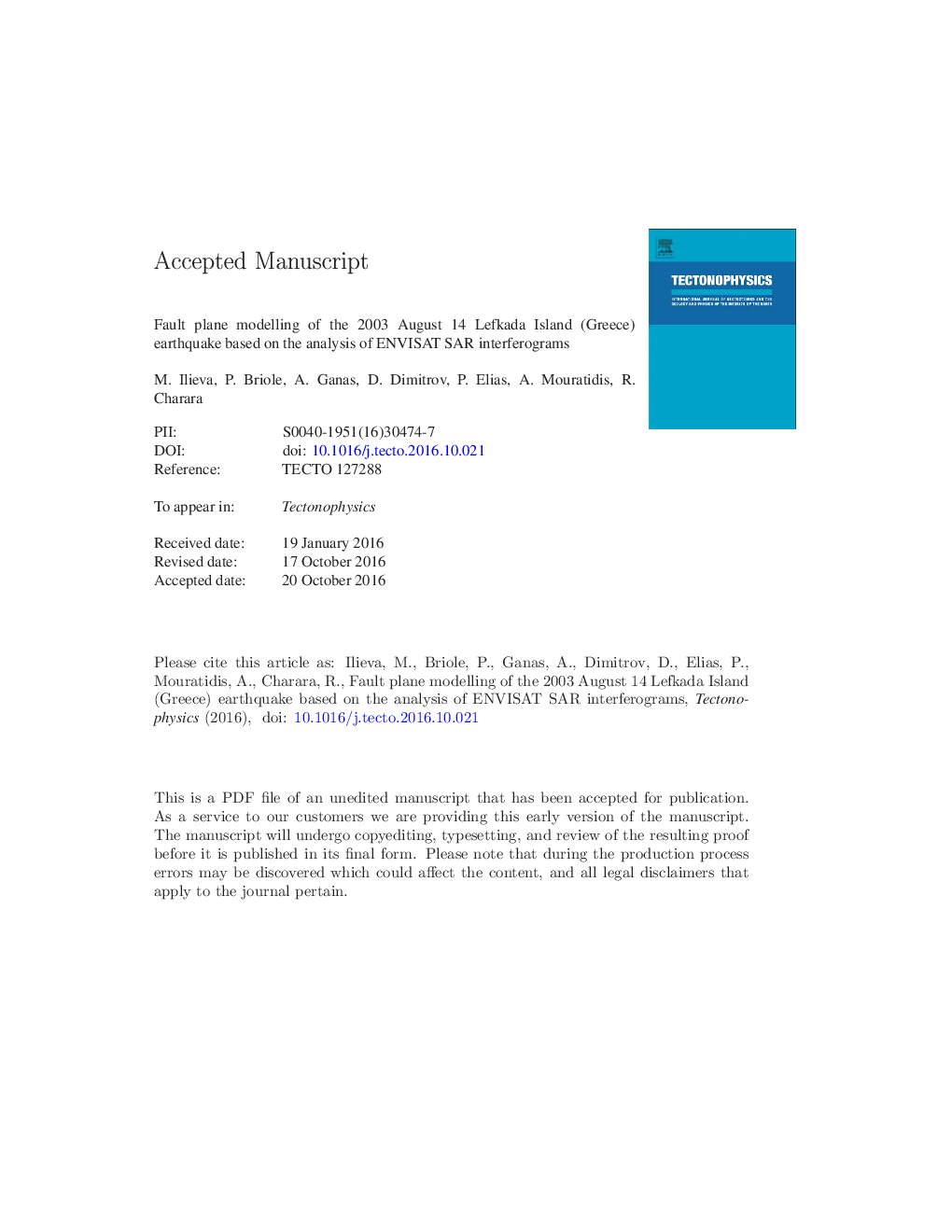| Article ID | Journal | Published Year | Pages | File Type |
|---|---|---|---|---|
| 5781868 | Tectonophysics | 2016 | 36 Pages |
Abstract
On 2003 August 14, a Mw = 6.2 earthquake occurred offshore the Lefkada Island in the eastern Ionian Sea, one of the most seismically active areas in Europe. The earthquake caused extended damages in the island, and a number of ground failures, especially along the north-western coast. Seven ascending ENVISAT/ASAR images are used to process six co-seismic interferograms. The ROI-PAC package is used for interferogram generation with the SRTM DEM applied in a two-pass method. The formation of the co-seismic pairs is limited due to the existence of one pre-seismic image only. Dense vegetation is covering the island, which is an obstacle in getting good coherence, since C-band images are used. Nevertheless, ground deformation, of > 56 mm (two fringes) in the line of sight of the satellite, is detected in all six co-seismic interferograms. By inversion of the data from the observed fringes, a best fitting model of the activated fault is calculated assuming a dislocation in an elastic half space. The inferred fault is a pure dextral strike-slip fault, dipping 59 ± 5° eastward, 16 ± 2 km long and 10 ± 2 km wide. It is located north of the fault of the Mw = 6.5 2015 November 17 earthquake, and a 10-15 km gap remains between the two faults. The 2003 fault does not reach the surface and its upper edge is at a depth of 3.5 ± 1 km. No evidence is found of slip south of the Lefkada Island as suggested by some seismological studies.
Related Topics
Physical Sciences and Engineering
Earth and Planetary Sciences
Earth-Surface Processes
Authors
M. Ilieva, P. Briole, A. Ganas, D. Dimitrov, P. Elias, A. Mouratidis, R. Charara,
